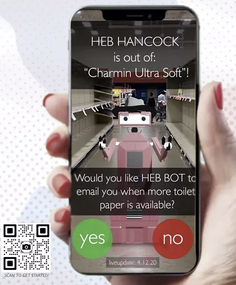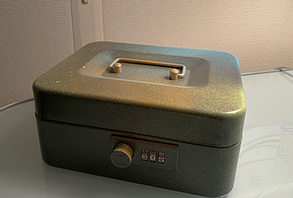UT: Experimental Storytelling
Creative Storytelling @48 Moods | Story Experiments | Texas Immersive Acceptance Kit
Course Description
As the media landscape becomes populated with more and more screens—from television and computer screens to mobile displays, but also virtual reality headsets, other wearable devices, and a rapidly growing Internet of Things—we have quite literally a whole world of possibilities for creating experimental storytelling experiences. These technologies offer unique potential for creating new and different kinds of experiences, including ones that respond with increasing precision to people’s behavior and input. So how might these screens (and the ecosystem within which they function) change the stories we share, but also how we share them? What might be the next step beyond the screen?
This course aims to introduce students to experimental storytelling that explores our senses, the physical and virtual world to create an immersive story experience. Using design thinking and human computer interaction, students will ideate, synthesize concepts, create user scenarios based on the story’s audience and develop a POC (proof of concept) for feedback and entry into becoming new creators.
Purpose
Understand the expansion of mythology and archetypes, explore a variety of emerging technologies that afford new ways of telling stories and apply them to world-building scenarios with real-world clients that offer customer personalization, interaction, and reward.
My role is to be a “guide on the side”... to help you acquire the skills needed to succeed whether you choose to become a Creative Director, Experience Designer, Producer, Strategist. The student's role is to be present, be eager to learn new things, be curious, ask questions, do good work and accept constructive feedback from myself and their peers.
Course Learning Outcomes
In addition to keynote guest speakers and an intuitive curriculum, students embark with 3 experimental projects throughout the semester:
Course Description
As the media landscape becomes populated with more and more screens—from television and computer screens to mobile displays, but also virtual reality headsets, other wearable devices, and a rapidly growing Internet of Things—we have quite literally a whole world of possibilities for creating experimental storytelling experiences. These technologies offer unique potential for creating new and different kinds of experiences, including ones that respond with increasing precision to people’s behavior and input. So how might these screens (and the ecosystem within which they function) change the stories we share, but also how we share them? What might be the next step beyond the screen?
This course aims to introduce students to experimental storytelling that explores our senses, the physical and virtual world to create an immersive story experience. Using design thinking and human computer interaction, students will ideate, synthesize concepts, create user scenarios based on the story’s audience and develop a POC (proof of concept) for feedback and entry into becoming new creators.
Purpose
Understand the expansion of mythology and archetypes, explore a variety of emerging technologies that afford new ways of telling stories and apply them to world-building scenarios with real-world clients that offer customer personalization, interaction, and reward.
My role is to be a “guide on the side”... to help you acquire the skills needed to succeed whether you choose to become a Creative Director, Experience Designer, Producer, Strategist. The student's role is to be present, be eager to learn new things, be curious, ask questions, do good work and accept constructive feedback from myself and their peers.
Course Learning Outcomes
- Expose students to new affordances of emerging media.
- Introduce students to different models of storytelling
- Encourage students to test out multiple forms of storytelling through their mobile device and computer.
In addition to keynote guest speakers and an intuitive curriculum, students embark with 3 experimental projects throughout the semester:
- Solo Project
- Team Project
- Class Project with Real-World Client
Story Experiments
Through the completion of different software certificates, students design themed experiences and prototyped their ideas.
TXI Acceptance Kit Project
As a way to induct the next cohort of accepted Texas Immersive Explorers, students develop an interactive story experience to welcome them into the program.
This project focuses on how to work in teams and develop an idea from story concept to completion. The entire class will be broken into unique teams that build on their core expertise to hone in on skills they are best at contributing within a team project. The class will work on the same concept together to complete the final product. Our goal is to revise and expand upon a developed interactive story experience that is the current “Acceptance Letter” to welcome the first cohort of 48 students into the new specialization, Texas Immersive.
This project focuses on how to work in teams and develop an idea from story concept to completion. The entire class will be broken into unique teams that build on their core expertise to hone in on skills they are best at contributing within a team project. The class will work on the same concept together to complete the final product. Our goal is to revise and expand upon a developed interactive story experience that is the current “Acceptance Letter” to welcome the first cohort of 48 students into the new specialization, Texas Immersive.
@48 Moods
@48Moods is an experiment in collective storytelling using Instagram created each semester by the class. Biweekly, students are called to respond to a theme with an image & haiku. The simplicity of the exercise helps students build a lasting creative process.
In numerology the number 48 resonates with creative expression, so nothing better than having Experimental Storytelling be a culmination of creative expression made through a collective story together. Stories are complex, yet simple; participatory, yet controlled; and unequivocally are visceral, can trigger behavior and over time are reflective of our individual agency, our shared moment in time and the culture that we live in. With assigned themes each week, the goal with each assignment is to compose an original photo and haiku that best represents a personal take on the theme proposed, then post it to @48Moods on Instagram.
In numerology the number 48 resonates with creative expression, so nothing better than having Experimental Storytelling be a culmination of creative expression made through a collective story together. Stories are complex, yet simple; participatory, yet controlled; and unequivocally are visceral, can trigger behavior and over time are reflective of our individual agency, our shared moment in time and the culture that we live in. With assigned themes each week, the goal with each assignment is to compose an original photo and haiku that best represents a personal take on the theme proposed, then post it to @48Moods on Instagram.
Student Feedback
"The @48moods is very successful in transferring the idea of experimental storytelling in an interactive way i.e. every single one had their hands on the project and communication between them also created the connection between single post in the whole interaction. In summary, @48moods is a 'do it – not say' method to engage student in a real experimental storytelling."
- Thi Lee, Fall 2020 Cohort
"There is power in using imagery (or any other sensory example, such as #sound) to tell a story and it lies in the unique ability it has to overcome verbal or written communication barriers. It curates a compelling summary of what is important to specific people and can help identify a “community voice” on certain topics...a story is crafted through 48moods and told in a novel way."
- Jacky Zhu, Fall 2020 Cohort
,"Although haiku is simple it gives a large room for imagination. Everyone has different takes on the theme. Some of the posts are so unexpected. When I see those posts, they motivate me to think harder and think outside of the box. This is also the benefit of a collective storytelling project. Everyone can contribute to the story not just bouncing on the wall by myself. Overall, I think it is beneficial to the students I hope it still is part of the course in the future."
- Yiling Cao, Fall 2020 Cohort








